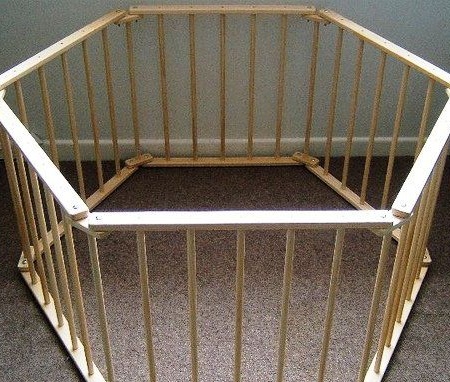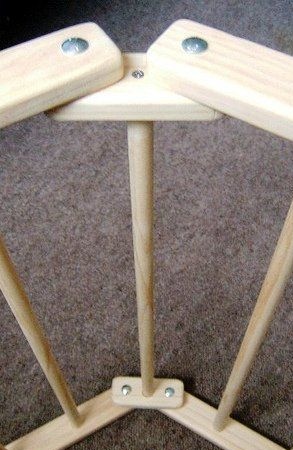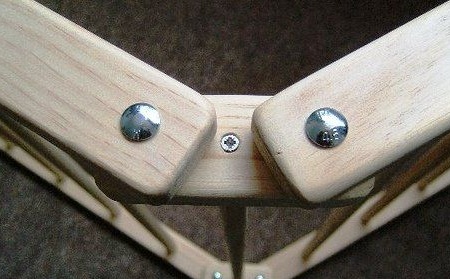
Each parent will appreciate the invention of the playpen. When a child begins to move around, keeping track of him is extremely difficult, and busy parents are sometimes almost impossible. Not everyone has funds for a nanny. In this case, the playpen will help out, the materials for which will cost quite inexpensively.
Materials and tools:
1. As a frame, a tree and a grid are considered. Of these, wood is much preferable, as it is environmentally friendly, reliable and durable. The bars are selected from hard wood in the format of 15x50x1000 mm in the amount of 12 pieces. An important tip is that before starting to make the arena, it is important to make sure that the tree is well-dried, otherwise it may begin to creep in the future.
2. Round bars to create a grid with a diameter of 10 mm in the amount of 36 pieces.
3. Nuts and bolts with a diameter of 5 mm.
4. Emery cloth for woodwork of two types - zero and standard.
5. Self-tapping screws.
6. High quality PVA glue.
7. Non-toxic paint or varnish.
8. Electric jigsaw.
9. Hacksaw.
10. Drill and drill with a diameter of 5 mm and 10 mm.
11. Paint brush.
Work order:
The playpen is of various shapes - rectangular, square, hexagonal. The latter type is preferable, since if necessary it can be folded in the form of an accordion and be ready for transportation. First of all, the sawn-down meter bars must be sanded to such a state that in the future they do not have to deal with splinters in the fingers. Only after this can we start assembling the sections. To do this, with the help of markings, the location of the fixing racks and cylindrical glazing beads should be indicated. It is important that the upper marks coincide with the lower ones. Through the edges of the upper and lower rails, bolt holes are drilled through. Under the bars of the lattice, nests are created in half the thickness of the bar, that is, 7 mm. The distance between the rods should not exceed 10 cm - this gap is enough to prevent the baby’s hand or foot from getting stuck, but at the same time he couldn’t stick his head in. To make the depth of the nest true, you can use the trick - attach a rail to the drill parallel to the drill, which will be shorter by 7 mm. At that moment, when the drill reaches the desired depth, the rail abuts against the bar.
Simultaneously with all these procedures, the walls of non-through holes are smeared with glue. The ends of the barrier rods are inserted first into the nests of the lower, then into the nests of the upper bar. Five subsequent sections are collected in a similar manner, and then exposed for drying.
While the sections are drying, the fixing posts are assembled. You can not do without them, because the design must be firmly held in an upright position, but at the same time it can be easily and quickly folded.

Particular attention should be paid to fasteners, consisting of two small bars connected by a vertical bar. In the upper and lower bars, three holes should be drilled - two through holes for bolts and one through hole for a bar. To enhance the shutter speed, the glazing bead is reinforced with screws.

Further, the entire structure is assembled in such a way that the through holes of large bars are aligned with the same holes of small ones. All this is twisted by bolts.

To ensure the safety and hygiene of the coating, it should be water-based - it is not difficult to acquire such varnishes. In this case, even if the malyshch begins to taste the coating, it will not be harmful.
In a similar wooden playpen, several kids with toys can freely fit. It takes a little time to assemble this product, but the result exceeds all expectations.
